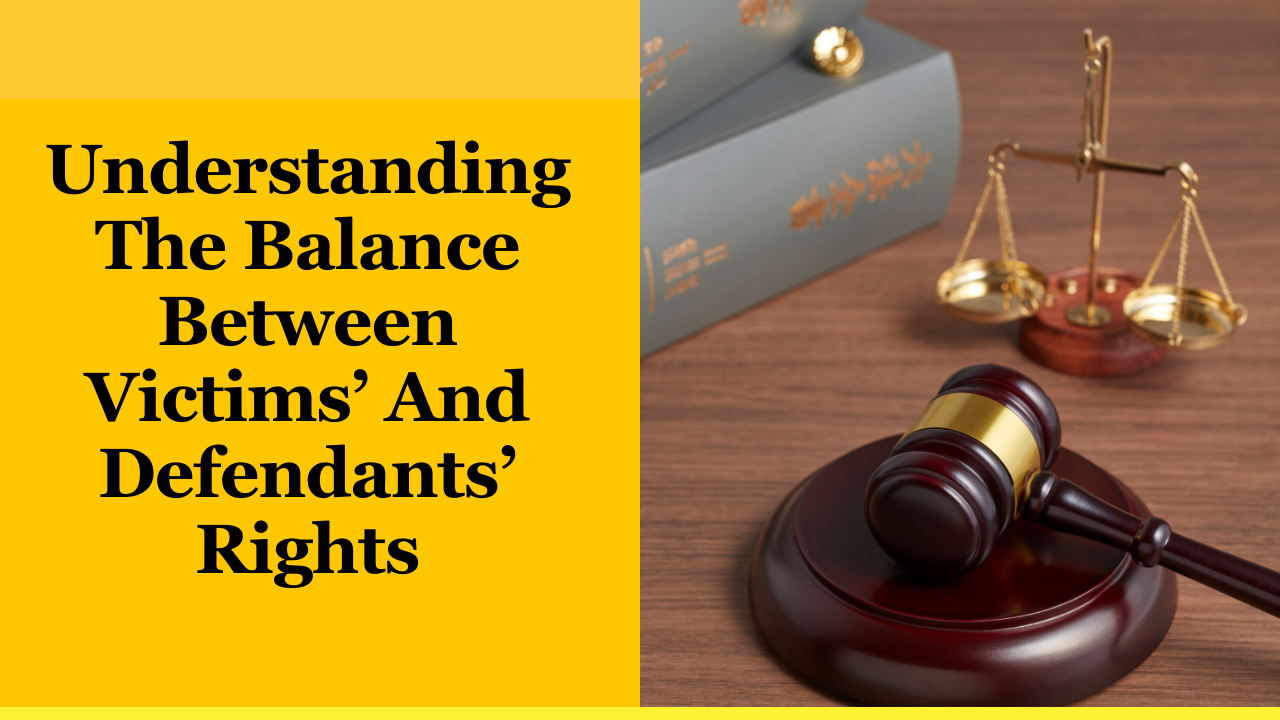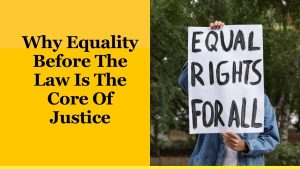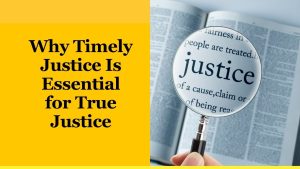The justice system is one of society’s most powerful institutions. It holds the authority to punish those accused of crimes, protect those harmed, and safeguard human rights. But this responsibility comes with a profound challenge: how to balance the rights of victims and defendants fairly.
On one side, victims want acknowledgment, protection, and justice for the harm they’ve endured. On the other, defendants are presumed innocent until proven guilty and are guaranteed constitutional rights to ensure fairness. If either side is ignored, the justice system loses its credibility.
This article explores why this balance matters, how rights have developed over time, the tensions that arise, and what reforms can make justice more effective and humane.
Why Balance Matters in Justice
At its core, the justice system must serve two equal missions:
- Protecting victims: Giving them dignity, safety, restitution, and a chance to heal.
- Protecting defendants: Ensuring that trials are fair, evidence is credible, and no one is wrongfully punished.
Risks of imbalance
- If victims’ rights are ignored: They may feel abandoned, retraumatized, and lose faith in the system. This can silence others from reporting crimes.
- If defendants’ rights are ignored: Wrongful convictions can occur, civil liberties are eroded, and innocent people may suffer life-altering consequences.
The legal system’s legitimacy depends on upholding both sides simultaneously.
A Brief History of Victims’ and Defendants’ Rights
Historically, most legal systems prioritized the state vs. the accused, with victims often sidelined.
- In early U.S. criminal law, victims played little role beyond reporting crimes. Trials focused on prosecuting defendants.
- Over time, civil rights movements and advocacy groups pushed for victims to have a stronger voice.
- The Victims of Crime Act (1984) marked a turning point in the U.S., creating funding for victim support and formalizing rights in law.
Meanwhile, defendants’ rights were enshrined in the U.S. Constitution through the Bill of Rights: the Fifth, Sixth, and Fourteenth Amendments guarantee due process, fair trial, and legal protections.
This dual development shaped today’s justice landscape.
Victims’ Rights in the Justice System
Victims’ rights movements aim to ensure that those harmed by crime are treated with compassion, respect, and fairness.
Key Rights for Victims
- Right to be informed: Updates on hearings, sentencing, and parole decisions.
- Right to be present: Attend trials and hearings related to the case.
- Right to be heard: Give victim impact statements during sentencing or parole.
- Right to protection: Safeguards against intimidation or harassment.
- Right to restitution: Compensation for financial losses caused by the offender.
Example: State Amendments
Several U.S. states passed “Victims’ Rights Amendments” in their constitutions. These guarantee victims participation in the justice process and place legal duties on prosecutors and courts to recognize their interests.
Psychological Importance
For many victims, being heard in court or receiving restitution can be an essential part of emotional recovery and closure.
Defendants’ Rights in the Justice System
Defendants’ rights are fundamental to democracy. They protect against wrongful convictions and abuse of government power.
Key Rights for Defendants
- Right to presumption of innocence until proven guilty.
- Right to a fair and speedy trial under the Sixth Amendment.
- Right to an attorney, even if they cannot afford one.
- Right to remain silent (Fifth Amendment).
- Right to confront and cross-examine witnesses.
- Right to appeal an unfair conviction.
Why These Rights Matter
Without these safeguards, governments could imprison people without trial, silence dissent, or use biased courts to punish the innocent. The presumption of innocence is a cornerstone of freedom.
Comparing Victims’ and Defendants’ Rights
Here is a side-by-side comparison of the two:
| Aspect | Victims’ Rights | Defendants’ Rights |
|---|---|---|
| Primary Goal | Recognition, safety, and recovery | Protection from wrongful punishment and unfair state power |
| Legal Basis | Victims of Crime Act, state amendments, advocacy laws | U.S. Constitution, Bill of Rights, Supreme Court rulings |
| Examples | Right to be heard, right to protection, right to restitution | Right to fair trial, right to silence, right to counsel |
| Common Challenges | Limited enforcement, victims sidelined during legal procedures | Media bias, long trial delays, risk of wrongful conviction |
Both sets of rights intersect in courtrooms, where balance must be carefully maintained.
The Tension Between Victims’ and Defendants’ Rights
Even with laws in place, real-world justice faces conflicts:
1. Speed vs. Fairness
Victims often want quick justice to move on. Defendants, however, need time to prepare a strong defense. Long delays frustrate both sides.
2. Media Influence
High-profile cases may generate public pressure to convict. This can unfairly sway juries, while also leaving victims vulnerable to unwanted media attention.
3. Restorative vs. Retributive Justice
- Retributive justice seeks punishment.
- Restorative justice seeks healing, reconciliation, and accountability.
Finding the right mix is difficult, but restorative models often give victims a stronger voice while keeping trials fair.
4. Victim Impact Statements
These allow victims to express their suffering during sentencing. But critics argue they may emotionally sway judges beyond the facts of the case.
Role of Courts and Lawmakers
Courts and lawmakers serve as guardians of balance:
- Courts ensure due process for defendants while considering victims’ rights.
- Legislatures pass laws expanding victim protections, such as victim compensation programs.
- Federal initiatives like the Office for Victims of Crime (OVC.gov) provide resources and standards.
By setting boundaries and rules, they prevent either side from being neglected.
Modern Challenges in Balancing Rights
- Overcrowded Courts
Heavy caseloads delay trials. This leaves victims waiting for closure and defendants awaiting judgment in uncertainty. - Digital Evidence
Phones, social media, and surveillance add complexity. They can help victims prove abuse but also risk privacy violations. - Cultural and Racial Bias
Minority victims sometimes receive less support, while minority defendants often face harsher judgments, creating systemic imbalance. - Victim Participation in Sentencing
Some reforms allow victims more say in sentencing. Supporters see this as empowering; critics worry it could undermine neutrality.
Global Perspectives
Different countries handle balance differently:
- United States: Strong constitutional protections for defendants, with growing victim advocacy movements.
- Europe: European Court of Human Rights emphasizes fair trial rights, but victim participation varies by country.
- Restorative Justice Models (New Zealand, Canada): Indigenous traditions and modern reforms integrate victims and offenders in healing dialogues.
These comparisons show that balance is culturally shaped, but fairness remains a universal priority.
Building a Fairer System
To improve the balance between rights, reforms must focus on:
- Expanded victim support services: Counseling, shelters, compensation funds.
- Stronger defendant protections: Legal aid, speedy trial enforcement, wrongful conviction safeguards.
- Restorative justice programs: Encouraging dialogue and rehabilitation.
- Judicial training: Judges trained in trauma awareness and fairness principles.
- Community engagement: Educating the public about both sets of rights.
Such measures strengthen trust in the justice system.
Balancing victims’ rights and defendants’ rights is one of the toughest challenges for modern justice systems. Victims deserve safety, dignity, and closure, while defendants must be shielded from wrongful punishment and protected by constitutional rights.
This balance is never perfect—it requires constant law reform, judicial sensitivity, and public understanding. By supporting both sides equally, the justice system can remain both fair and humane, serving the larger goal of true justice for society.
FAQs
Why is balancing rights so important?
Because justice must protect both the harmed and the accused, ensuring fairness and avoiding wrongful convictions or victim neglect.
Do victims always have equal rights in court?
Not always. While laws exist, victims are sometimes sidelined in proceedings. Advocacy continues to strengthen their voice.
Can restorative justice solve this balance?
It can help by giving victims a role in the process while holding offenders accountable, but it cannot replace formal due process.




